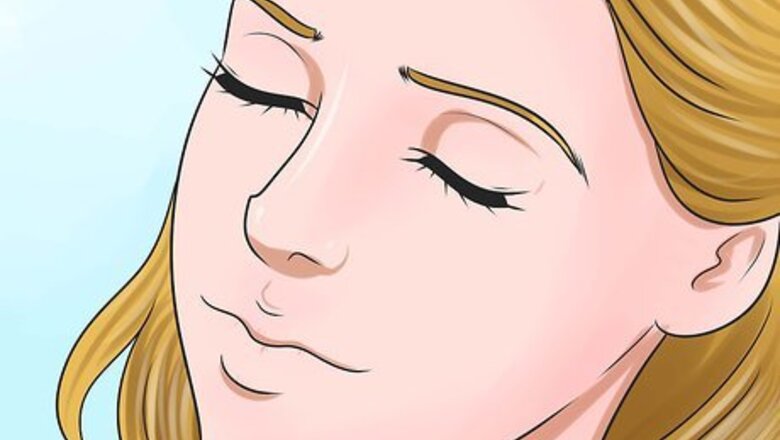
views
Treating Red Eyes
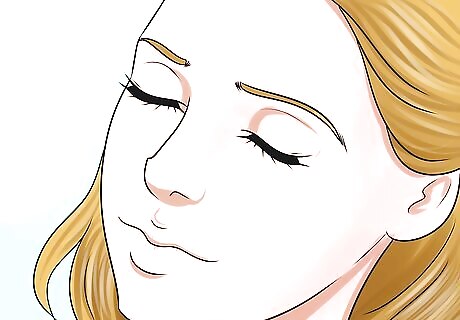
Rest your eyes. For most causes of red eyes — a corneal scratch, lack of sleep, eye strain from staring at a computer screen, too much sun exposure, long road trips — rest is the best medicine. Get some extra sleep, and minimize your time looking at computers, TVs, books, and your phone. Try listening to the radio or a book on tape instead. Even if you can't take time off to give your eyes a whole day of rest, be sure to give them smaller breaks. If reading or working at a computer, you should stop every fifteen minutes and stare at a distant object for at least 30 seconds. This change in focal point will help to relax your eye muscles. Every two hours, take a 15-minute break from your screen to rest your eyes. Go for a walk, work out, have a snack, make phone calls — anything but staring at your computer screen or phone.
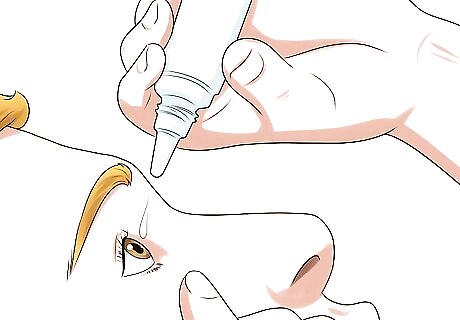
Use eye-drops or artificial tears. For occasional eye redness, you can get relief by using eye drops, which are also sometimes called artificial tears. These are available at any drugstore and only cost a few dollars. They lubricate and cleanse your eye, reducing redness and irritation. They come in four types: With preservatives — Preservatives like benzalkonium chloride, oliexetonium, polyhexamethylene biguanide, polyquad, purite, and sodium perborate (GenAqua) prevent bacteria from growing, but they also irritate your eyes. If your eyes are sensitive or if you will be using the drops for an extended period of time, preservatives should be avoided. Without preservatives — Systane, GenTeal, Refresh, Thera Tears, and Bausch and Lomb, amongst others, all sell preservative-free eye drops. For contacts — If you wear contacts, look for drops designed specifically for use with them. Whitening / anti-red eye — Do not use whitening drops like Visine, Clear Eyes, and All Clear. Whitening eye drops will actually exacerbate eye redness over time.
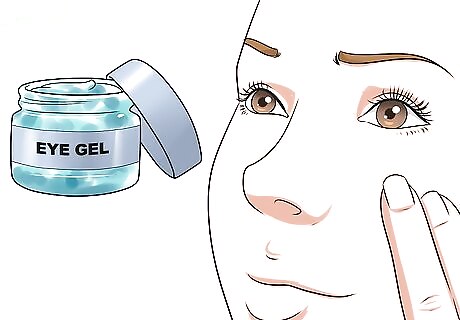
Consider using an eye gel for extreme eye dryness. Gels and ointments are thicker and last longer than drops, but they can also blur your vision for a time. That makes them best for use just before you go to sleep, so as to prevent your eyes from drying out overnight. Be sure to use a hot compress or scrub your eyelids with mild soap before applying gels or lotions. This will prevent them from clogging glands and ducts. Do not use gels or ointments if you have been diagnosed with meibomian gland disease unless your doctor recommends that.

Take allergy medication. Seasonal allergies, pet allergies, or environmental allergies can all cause red eyes. Allergies usually occur with other symptoms such as itchiness and tearing, and are typically worst in the morning. The reason is twofold: first, sleeping in a home with allergens exposes you to their effects for a prolonged period of time, and second, seasonal allergies are worst in the morning when there is more pollen in the air. To deal with allergies: Try an oral antihistamine, such as cetirizine (Zyrtec), desloratadine (Clarinex), fexofenadine (Allegra), Levocetirizine (Xyzal), or loratadine (Claritin). Use medicated eye drops that contain antihistamine or anti-inflammatories, including azelastine (Optivar), emedastine (Emadine), ketotifen (Alaway, Zaditor), or olopatadine (Pataday, Patanol). Keep your windows closed during allergy season to reduce your exposure to pollen. Keep pets out of your bedroom, and especially out of your bed. Try an air purifier to keep in your home, which may help reduce the presence of allergens.
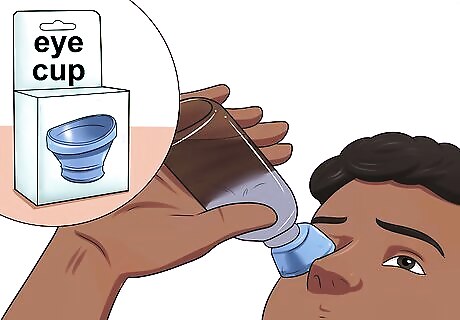
Try an eye rinse. An eye rinse helps to remove irritants in your eye that can contribute to redness. In addition, it moisturizes and cools your eye. You can rinse your eyes with lukewarm water by letting a stream run over your eye, using an eyecup, or standing in the shower and letting the water run into your eye (do not spray it directly into your eye). For an even greater soothing effect, consider using a specially prepared eye rinse: Boil a cup of distilled water. Add a tablespoon of eyebright, chamomile flowers, or crushed fennel seeds. Remove from heat, cover the pot, and let it steep for 30 minutes. Strain the liquid into a sterilized container using a coffee filter. You can keep the rinse in the refrigerator for up to 7 days.
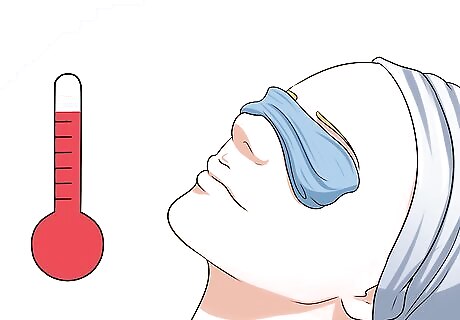
Place a warm compress over your eyelids. Eyelid inflammation can block the flow of moisturizing oil to your eyes. A warm compress can help to unblock your oil ducts. Hold a clean, dry washcloth under warm running water until it is soaked and then wring out the excess water. Then fold the washcloth in half and place it over your closed eyes. Relax with the washcloth over your eyes for five to 10 minutes.
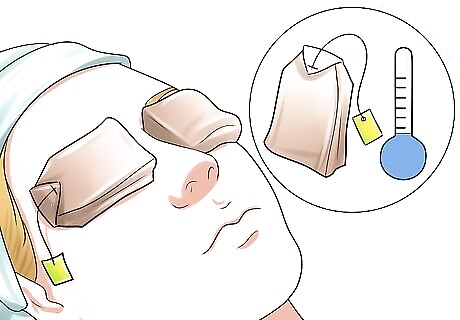
Relax with cool, damp teabags over your eyes. Green tea and chamomile tea both contain chemicals that can soothe irritated skin, reduce inflammation, and open blocked oil ducts. Steep two tea bags, then place them in the refrigerator or freezer until they are cool, before placing them over your closed eyes for five minutes.
Stopping Causes of Eye Redness

Make sure that you do not have a foreign object in your eye. The tiniest bit of dust can cause irritation if lodged in your eye. If your eyes feel scratchy, do not rub them, as this might scratch your cornea. Instead, it is best to wash your eye. You can do this by placing eye drops or saline in your eye and blinking rapidly. For an even more effective wash: Use clean hands to hold your eye open under a gentle stream of lukewarm running water. In the shower by allowing the water to hit your forehead and holding your eye open as the water runs down your face. Or, you can wash your eye with an eyewash station or an eyecup. If you have an object in your eye, you may have trouble opening and closing your eyelid.
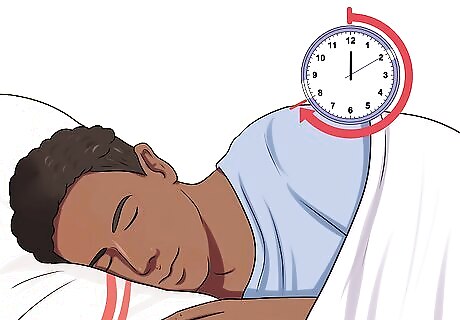
Sleep for eight hours every night. Not getting enough sleep is a common cause of red eyes. If you're also feeling tired and groggy throughout the day, your red eyes might be the result of insufficient sleep. Adults require between seven to nine hours of sleep per night, but some people may require more or less sleep to be at their best.
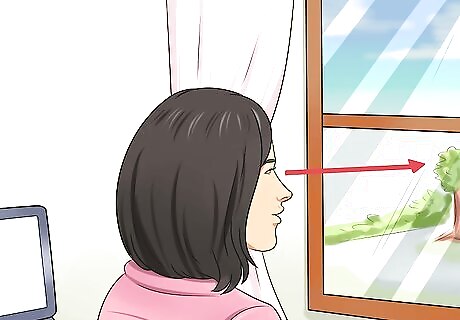
Give your eyes a rest from TV and computer screens. Even if you're getting enough sleep, you can still tire your eyes out by spending too much time in front of the computer or watching TV. This is because people blink less when staring at a screen, and because their eyes are forced to focus at the same distance for hours at a time, producing eye strain. Give your eyes a 15-minute break every two hours and take short 30 second breaks every 15 minutes. For long breaks, take a short walk and focus on things in the distance, or take a short 15-minute nap to give your eyes a chance to catch up with your busy schedule. For short breaks, look up and away from your computer for thirty seconds and focus on something in the distance, such as a tree out your window or a picture on the other side of your room.
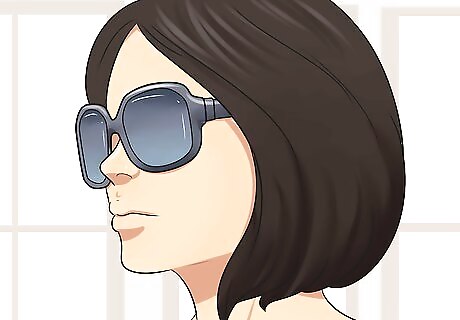
Wear sunglasses. Some studies show that excessive exposure to sunlight or wind can cause redness in the eyes. If you wear protective sunglasses when you're outside, you can protect your eyes from the wind and UV rays that can irritate them. Choose wraparound sunglasses that offer 99–100% protection from UVA and UVB rays. Wearing sunglasses is essential for good eye health later in life. Too much exposure to the sun can lead to problems like macular degeneration and cataracts later in life.

Wear your contact lenses less and take proper care of them. Contacts can sometimes cause eye redness, which may be related to an infection, lack of oxygen to your eyes, or contact irritation. Before putting in your contacts, place a few drops of saline solution or eye lubricant in your eyes and blink several times. This will clean the surface of your eye so that irritants don't get trapped underneath your contacts. Dirty, torn, or misshapen contacts can irritate your eyes and cause infection. Follow your eye doctor’s instructions for keeping your contact lenses clean. If you use disposable contact lenses, never wear them more than once. Do not sleep with your contact lenses. Avoid wearing your contact lenses when swimming or showering.
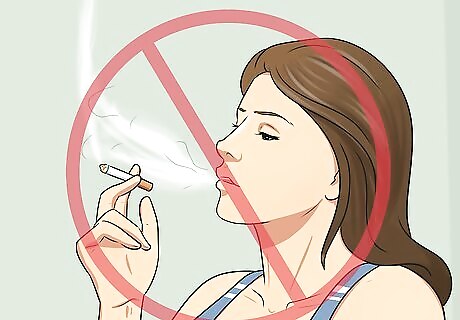
Quit smoking and avoid smoky environments. Smoke is a common cause of eye redness. If you smoke, try your best to quit smoking and keep your distance when others are smoking around you. In addition to reducing your eye redness, quitting smoking has lots of other health benefits.
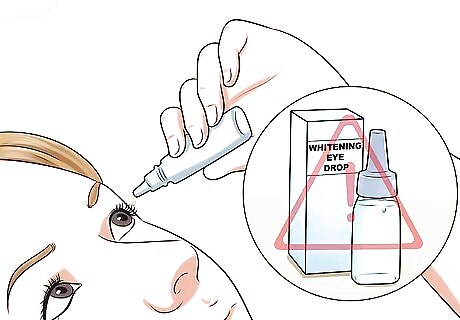
Do not overuse whitening eye drops. While drops that moisturize your eye are an effective way to treat redness, eye drops specifically designed to whiten your eyes can actually make the problem worse. These drops contain vasoconstrictors — chemicals that shrink the blood vessels on the surface of your eye. If you use them too much, your body builds up a resistance to them, making your eyes become even redder as soon as the effect of the chemical wears off. Common drops containing vasoconstrictors are Clear Eyes, Visine, and All Clear. Chemicals to avoid include: Ephedrine hydrochloride Naphazoline hydrochloride Phenylephrine hydrochloride Tetrahydrozoline hydrochloride
Seeking Medical Advice
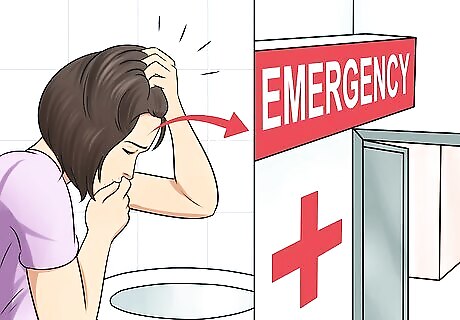
Seek immediate medical attention for serious symptoms. Red eyes accompanied by other serious symptoms can be a sign of a more significant problem such as a stroke or neurological disorder. Go to the emergency room or call 911 if: Your eye is red because of an injury. You have a headache with blurry vision and confusion. You see halos around lights. You are nauseous and/or vomiting.
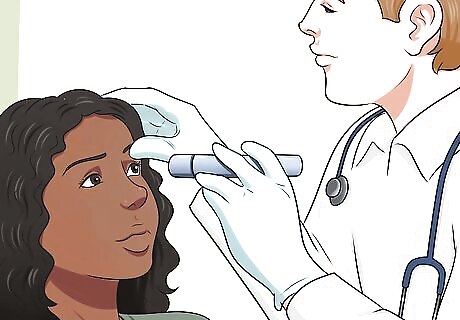
Go to your doctor if redness persists for more than two days. If your redness persists despite the above remedies, if you are on blood thinners, or if the redness is accompanied by pain, changes in vision, or any sort of discharge, you should consult your doctor. You should also talk to your doctor if you're having to use eye drops more than 2-3 times a day. Common medical causes of red eyes include: Pink Eye (conjunctivitis) — An infection of the transparent membrane that covers your eyes. It is treated with antibiotics and/or topical antihistamines. Chronic Dry Eye — This occurs when your eyes do not produce enough tears to lubricate them. It can be managed through punctual plugs (they plug the small holes in your eyelid that drain moisture), eye drops, and medication. Diabetic Red Eye — High blood sugar from diabetes can damage the tiny blood vessels in your eye, leading to red eyes. If diabetic, be sure to get regular eye exams. If untreated, diabetes can lead to loss of vision. Vasculitis — Occurs when the body's immune system attacks blood vessels. It is treated through the use of steroids and other medicines to reduce inflammation. Glaucoma — An increase in eye pressure that can cause blindness. It can usually be treated with eye drops that relieve pressure. Keratitis — An inflammation of the cornea that may be caused by wearing your contacts for too long or a minor injury. It may be accompanied by a bacterial infection.
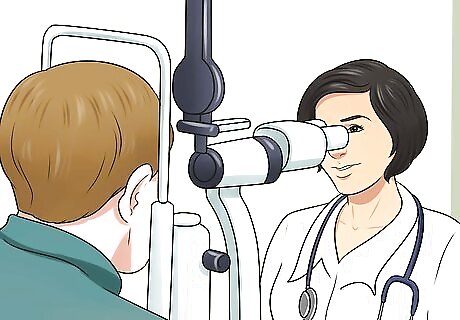
Consult your optometrist if your red eyes persist. Persistent red eyes that do not respond to medical treatment are often the cause of eye strain brought on by an inaccurate prescription or the need for bifocals. A prescription that is too strong will force the muscles of your eyes to constantly work to bring objects into focus, resulting in strain and redness. It is better to have a prescription that is too weak rather than too strong. If you find yourself having to lean close to your computer screen to see it clearly, you may need bifocals to help you see clearly at multiple focal points.











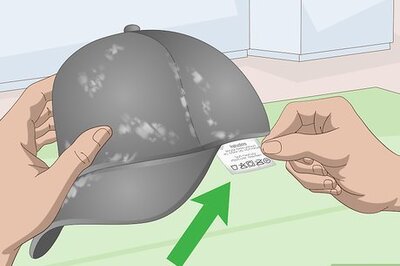

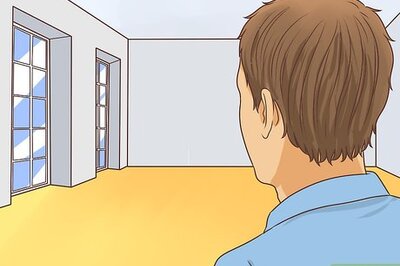

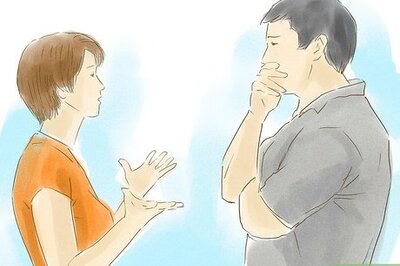




Comments
0 comment